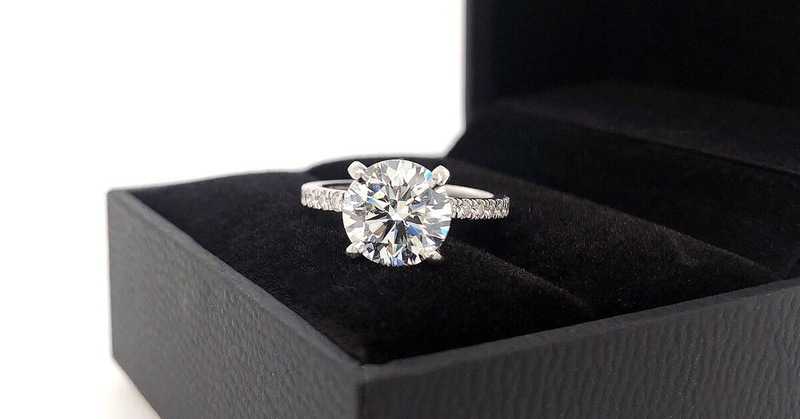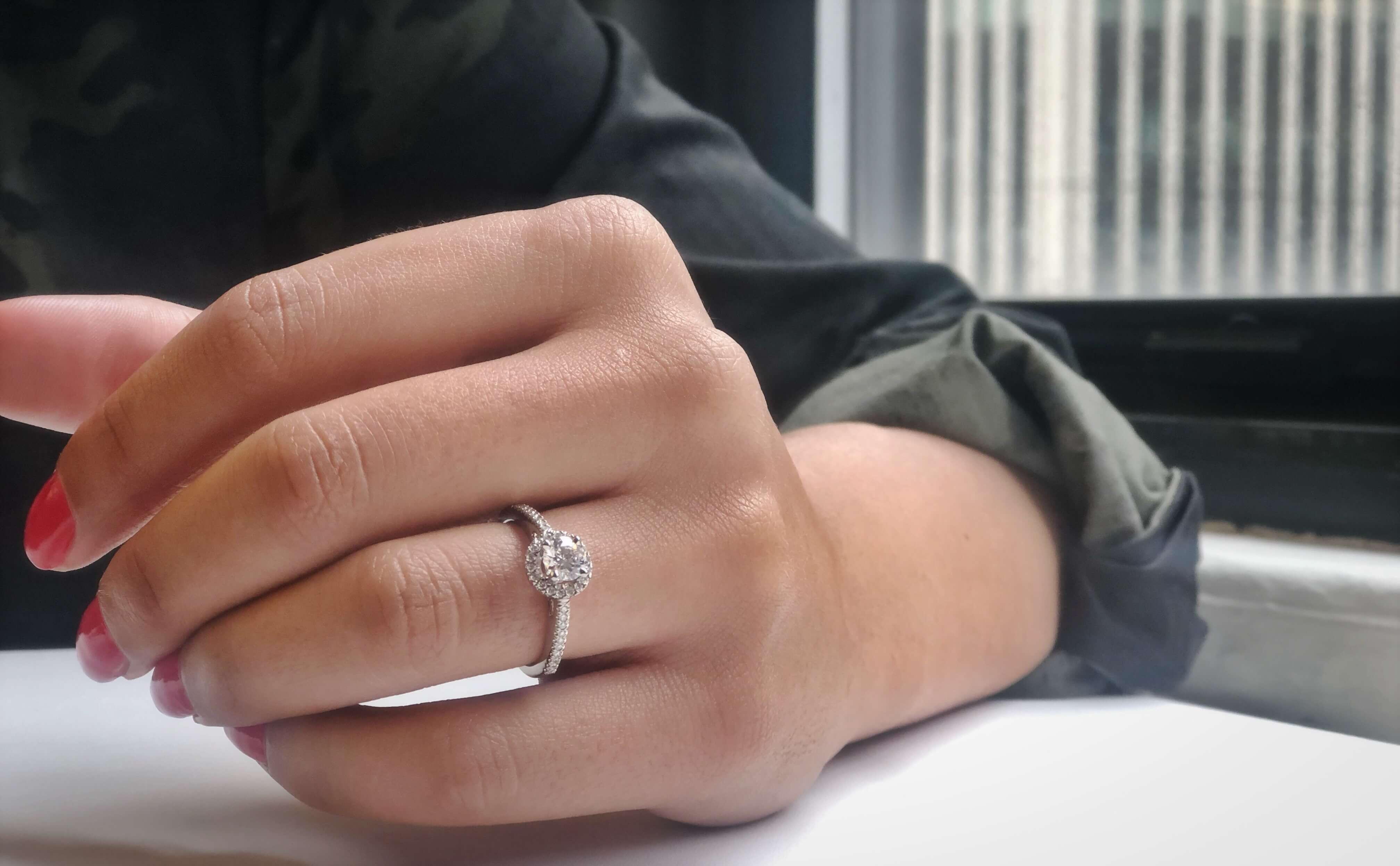1 Carat Round Diamond
Know the Value

1 Carat Round Diamond - Know the Value
Some may believe that all one carat diamonds have the same value, but this is not true. There are many intrinsic characteristics and unique attributes other than carat weight which will determine a diamond’s price. This is evident when you look at the average retail prices of diamonds by carat weight. On average, the retail price for one carat diamonds can be anywhere between $2,000 to $16,000, and between $8,000 to $72,000 for two carat diamonds . And of course, the retail price and the resale value of a diamond are very different things. Retailers include labor costs, store profit, and other factors into their sales price. But when you are selling a diamond, its resale value is based only on the diamond’s intrinsic qualities as well as supply and demand. So when you want to know the price of a diamond, knowing the distinction between retail and resale value is important.
How is the Price for a 1 Carat Diamond Ring Determined?
A diamond’s price is largely determined by its immutable characteristics – such as cut, color, clarity, carat weight, and fluorescence. The Gemological Institute of America (GIA) developed the International Diamond Grading System™, which is the globally recognized golden standard for assessing a diamond’s unique qualities. However, Diamond Grading Reports aren’t always necessary to determine the price of a diamond. Highly trained diamond buyers, such as CIRCA, utilize GIA’s standards for diamond grading and will be able to determine the diamond’s characteristics after a physical inspection. It is the interpretation of this data by a professional diamond buyer, coupled with the current supply and demand for those attributes, which will determine the price of not only a one carat diamond, but diamonds of all shapes and sizes
The most well-known characteristics provided on a Diamond Grading Report are the 4Cs – cut, color, clarity, and carat weight.
- Cut: Cut is defined by the angles and proportions of the different facets on the diamond in relation to each other. Each diamond is graded on how well it is cut. The proportions of the angles of each facet impact the way a diamond reflects light, attributing to its brightness, fire, and scintillation – or what most would refer to as its ‘sparkle’. Most diamonds with an excellent GIA cut grade tend to have tremendous life and brilliance. Diamonds with poor GIA cut grades have far less interaction with light and can appear dull and lifeless.
- Color: Diamonds are graded on a colorless scale. Colorless diamonds are categorized by the absence of any color (a yellow, brown, or grey hue can be from natural elements, such as nitrogen, inside the stone.) White diamonds are rarer and more highly sought after, so less color translates into greater value. The Color Grade for Colorless diamonds uses the alphabet to establish its scale, starting with D and going through to XYZ. D colors are colorless and sit at the top of the scale. E and F color diamonds are next and are still considered colorless diamonds, though they have a very minute hue. G – J color diamonds start to emit a subtle yellow color. K and lower start to have a very strong yellow hue, and when we go further down the scale to XYZ, diamonds exhibit a lot of color. So when a buyer is determining the price of your one carat diamond, its color grade will be important.
- Clarity: Clarity Grade is defined by the absence of any inclusions or blemishes on or inside of the stone. The less imperfections the diamond has, the better its clarity is. Inclusions are natural flaws located within the diamond and might be the result of overwhelming heat and pressure that the gemstone experienced during its formation. Other inclusions are the result of foreign materials getting caught in the diamond growth. Examples of inclusions are crystals, feathers, black carbon spots, and graining. Blemishes that appear on the outside of a diamond are usually the result of human wear and tear. Blemishes include chips, abrasions, and surface scratches . When gemologists grade a diamond’s clarity based on the GIA clarity scale, the size, type, number, and position of these imperfections all matter.
- Carat Weight: Carat Weight is defined by the diamond’s weight, in carats. While all one carat diamonds weigh the same, they can actually appear different in size depending on the proportions of a diamond. There are ‘ideal proportions’ for every diamond shape, so two round brilliant diamonds, for example, can each weigh one carat but one may appear smaller than the other depending on varying factors including depth, table size, and cut.
But there are many other characteristics besides the 4Cs which will determine a diamond’s price. To see a full list of what diamond buyers looks for, see our GIA Diamond Grading Report guide for information.
Why Are Round 1 Carat Diamond Engagement Rings More Expensive?
When valuing a diamond, all attributes, including the diamond’s shape, must be taken into consideration. Take the price comparison for 1.00 carat diamonds in the price chart below. It was compiled by the International Gem Society (IGS) and compares at the price of different shapes of diamonds sold by Blue Nile:

The more demand there is for a specific shape, the higher the price will be. Diamonds that come in any shape other than round are referred to as Fancy Shape. Any Fancy Shaped one carat diamond engagement ring will have more variation in price than a Round.
That said, Fancy Shapes generally tend to have lower retail prices than round diamonds of the same size, and their resale value corresponds accordingly.
So, How Much is a 1 Carat Round Brilliant Cut Diamond?
